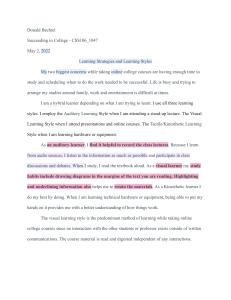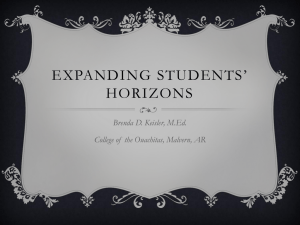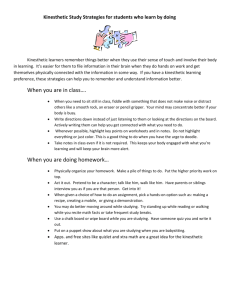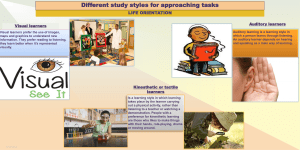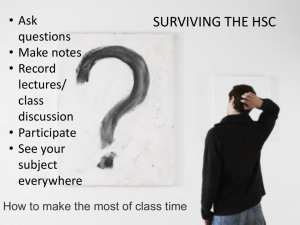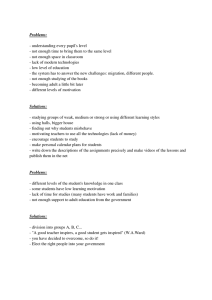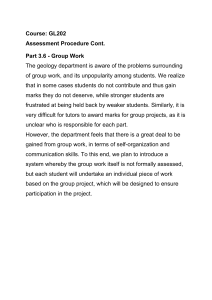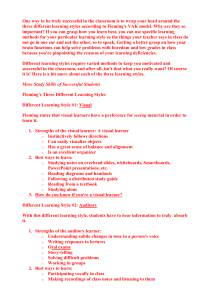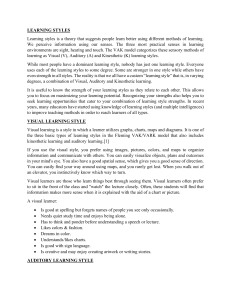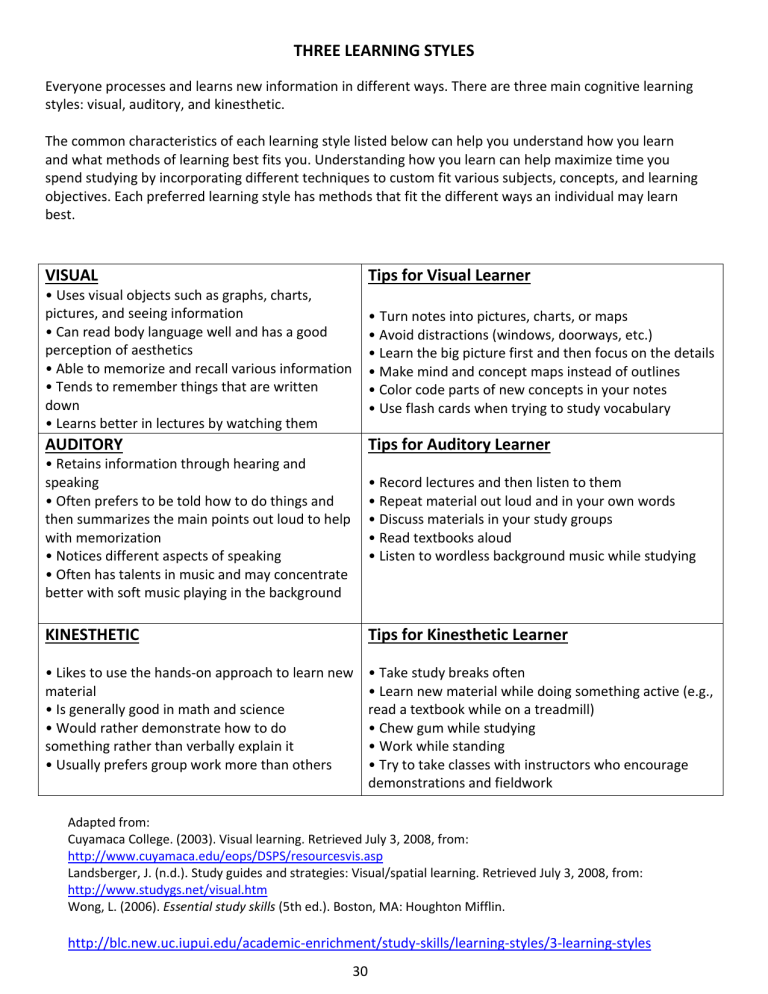
THREE LEARNING STYLES Everyone processes and learns new information in different ways. There are three main cognitive learning styles: visual, auditory, and kinesthetic. The common characteristics of each learning style listed below can help you understand how you learn and what methods of learning best fits you. Understanding how you learn can help maximize time you spend studying by incorporating different techniques to custom fit various subjects, concepts, and learning objectives. Each preferred learning style has methods that fit the different ways an individual may learn best. VISUAL Tips for Visual Learner • Uses visual objects such as graphs, charts, pictures, and seeing information • Can read body language well and has a good perception of aesthetics • Able to memorize and recall various information • Tends to remember things that are written down • Learns better in lectures by watching them • Turn notes into pictures, charts, or maps • Avoid distractions (windows, doorways, etc.) • Learn the big picture first and then focus on the details • Make mind and concept maps instead of outlines • Color code parts of new concepts in your notes • Use flash cards when trying to study vocabulary AUDITORY Tips for Auditory Learner • Retains information through hearing and speaking • Often prefers to be told how to do things and then summarizes the main points out loud to help with memorization • Notices different aspects of speaking • Often has talents in music and may concentrate better with soft music playing in the background • Record lectures and then listen to them • Repeat material out loud and in your own words • Discuss materials in your study groups • Read textbooks aloud • Listen to wordless background music while studying KINESTHETIC Tips for Kinesthetic Learner • Likes to use the hands-on approach to learn new material • Is generally good in math and science • Would rather demonstrate how to do something rather than verbally explain it • Usually prefers group work more than others • Take study breaks often • Learn new material while doing something active (e.g., read a textbook while on a treadmill) • Chew gum while studying • Work while standing • Try to take classes with instructors who encourage demonstrations and fieldwork Adapted from: Cuyamaca College. (2003). Visual learning. Retrieved July 3, 2008, from: http://www.cuyamaca.edu/eops/DSPS/resourcesvis.asp Landsberger, J. (n.d.). Study guides and strategies: Visual/spatial learning. Retrieved July 3, 2008, from: http://www.studygs.net/visual.htm Wong, L. (2006). Essential study skills (5th ed.). Boston, MA: Houghton Mifflin. http://blc.new.uc.iupui.edu/academic-enrichment/study-skills/learning-styles/3-learning-styles 30
